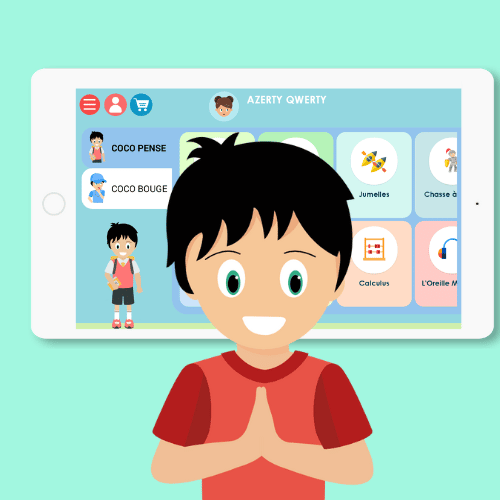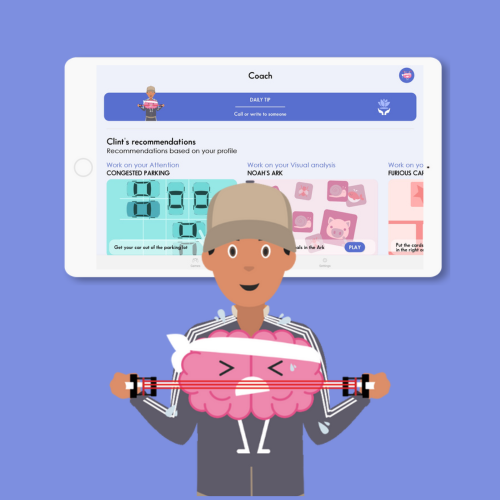Dropping out of school is a phenomenon that affects many students around the world. It is characterized by early school leaving, often before the end of the compulsory education cycle. The reasons for dropping out of school are numerous and complex, ranging from social and family problems to learning difficulties, absenteeism and lack of motivation. In this article, we will discuss some effective strategies for combating school dropout.
Develop personalized learning programs
Students at risk of dropping out often need individualized support to help them succeed and avoid school dropout. Personalized learning programs can include tutors, counselors, specialized teachers and psychosocial counselors. These professionals can help students identify their strengths and weaknesses, set realistic goals, and implement effective strategies to overcome obstacles.
Strengthen parent involvement about school
Parents play a crucial role in school dropout prevention. By increasing their involvement, parents can help create a positive and supportive environment for students. This may include in-home support activities, meetings with teachers, parent support groups and parenting workshops. Parents should be encouraged to be actively involved in their children’s learning to give them a sense of support and encouragement. Dropping out of school can be observed as early as elementary school, so it is important to be attentive and to help them with their homework, for example, as soon as they enter first grade.
Encouraging your child while helping them with their homework can be tricky, but the choice of words can make all the difference. Here are some examples of encouraging phrases for a parent:
– “I’m here to help if you need it. Homework can be difficult at times, but together we can make it easier.”
– “You’re really smart, and I know you’re capable of understanding this. If something seems complicated, let’s talk about it and find a solution together.”
– “I’m impressed with the effort you put into your homework. Keep it up, and don’t forget that every little step counts.”
– “Mistakes are part of the learning process. Don’t worry if you make mistakes, we can correct them together and learn from those moments.”
– “There’s no problem asking questions. If something isn’t clear, don’t hesitate to tell me, and we’ll find the answer together.”
– “I really like the way you think. How could we approach this in a way that you find more interesting or easy to understand?”
– “Homework is an opportunity to show what you already know and discover new things. It’s great to see how far you can progress.”
– “Do you need a break? Sometimes taking a few minutes to relax can really help you come back to homework with a fresh perspective.”
– “Remember that I’m proud of you, no matter what the result. The important thing is that you do your best, and I know you do.”
– “It’s normal to find some subjects more difficult than others. What could make it more interesting for you?”
The idea is to create a positive environment, show interest in the child’s efforts and encourage open communication to resolve any challenges.
Organize extracurricular activities
Participation in extracurricular activities serves as a cornerstone for students to establish meaningful connections within their school and community. In reality, engaging in a diverse array of options including sports teams, clubs, volunteer programs, and artistic pursuits, students not only have the opportunity to explore their interests but also develop essential life skills and form enduring bonds with their peers. These activities provide a rich tapestry of experiences that contribute to students’ personal growth, self-confidence, and sense of belonging, ultimately enhancing their overall educational journey and community engagement.

Encourage peer involvement to avoid school dropout
Students’ likelihood of success is significantly influenced by their social environment, particularly the presence of positive peer interactions; Cultivating a supportive peer network is crucial for fostering academic achievement and overall well-being among students. Programs that promote peer involvement, such as mentoring groups, discussion clubs, and collaborative projects, provide valuable opportunities for students to connect with their peers, share knowledge, and collaborate on various academic and social endeavors.
- In these settings, students not only benefit from academic support but also develop crucial interpersonal skills such as communication, teamwork, and empathy. Peer interaction facilitates a dynamic exchange of ideas, diverse perspectives, and mutual encouragement, fostering a sense of belonging and community within the school environment.
- In the mean time, positive peer relationships play a pivotal role in mitigating social challenges such as bullying, isolation, and exclusion, which can significantly impact students’ academic engagement and psychological well-being. Peers can serve as allies in combating negative social dynamics, promoting inclusivity, and creating a supportive and respectful school climate conducive to learning and personal growth.
By fostering positive peer interactions through various programs and initiatives, schools can effectively enhance students’ academic success, social-emotional development, and overall school experience, ultimately reducing the risk of dropout and promoting a culture of mutual support and collaboration.
Use technology effectively
Technology can provide many opportunities to combat school dropout. For example, the students can use educational apps, collaboration platforms, and educational games to enhance their skills.
Teachers can use monitoring and assessment tools to track student progress and provide additional support when needed. Teachers can also use technology to create more engaging and interactive lessons that stimulate students’ interest in learning. However, it is important to note that the use of technology should not replace the teacher-student relationship, but rather strengthen it.
COCO THINKS and COCO MOVES is an educational program that enables children who are more resistant to traditional teaching methods to learn with over 30 educational games, in a medium that is less academic and therefore easier for them to access. The CLINT program is designed to motivate teenagers and middle-schoolers!
COCO, for primary schools

CLINT, for middle school students

Improve the quality of education at school
Quality education is essential to preventing school dropout, for instance, teachers must be well trained, competent, and passionate about their work. They must also be able to adapt to individual student needs and provide constructive feedback to help students progress. Schools must invest in ongoing teacher training to improve the quality of instruction and maintain high standards.
Building community partnerships
Community partnerships can help support students who are at risk of dropping out, but the partnerships may include local businesses, non-profit organizations, government agencies, and community groups. These partners can provide internships, mentoring programs, scholarships and additional resources for students and their families. Community partnerships can also help strengthen the connection between the school and the community, which can help create a positive environment for students.
Focus on success to avoid dropout
Finally, it is important to focus on student success rather than student failure. As a matter of fact, schools must provide recognition and reward programs for students who make any kind of progress. Teachers should also provide positive and constructive feedback to help students maintain motivation and engagement. Students should feel supported, encouraged, and celebrated for their successes.
I want to share my experience as a parent, because I’m convinced that love, encouragement and quality time can truly transform a child’s life, even when all seems lost academically.
A few years ago, our son Alex dropped out of school. Declining grades, lack of interest in studies and an obvious loss of self-confidence seemed to dictate her future. It was a difficult time for our family, but rather than let despair set in, we decided to face the situation head-on.
Instead of focusing on past failures, we chose to focus on our son’s untapped potential. Every day, we reminded him how talented, intelligent and capable he was of overcoming obstacles. The constant encouragement began to do wonders for his self-confidence.
At the same time, we decided to spend some quality time with Alex. We explored her interests, shared activities together and simply enjoyed her company. These moments were not only invaluable to our parent-child relationship, but also paved the way for more open communication about her concerns and aspirations.
As parents, we also recognized that everyone learns at their own pace. We have adapted our approach to meet Alex’s specific needs. Homework has become less of a chore and more of a learning opportunity, and we’ve transformed our home into an environment conducive to education.
Over time, Alex began to show signs of improvement. His school revisions became less stressful, and he discovered a new sense of satisfaction in succeeding at tasks he would once have avoided. We were also able to provide him with more support in his educational career, which boosted his motivation.
Today, I’m proud to say that nur son has regained control of his education. He has rediscovered a taste for learninghas developed invaluable skills and now looks forward to a promising future. This experience has taught us that love, encouragement and time invested in a child’s life can truly change the course of their story.
If you’re the parent of a child going through difficulties at school, I encourage you to stay positive, offer constant support and share quality time. You might be surprised at the transformation that can happen when you choose to believe in your child’s unexplored potential.
Creating an inclusive learning environment
An inclusive learning environment is essential to preventing school dropout. Schools must ensure that all students, regardless of race, ethnicity, gender, sexual orientation, or socioeconomic status, feel welcomed, supported, and valued. Teachers must be trained to recognize and respond to individual student needs and to create lessons that are culturally and linguistically responsive to students. Schools must also provide additional resources for special needs students, such as tutors, counselors and support programs.
Provide alternative training options
Students who are in danger of dropping out may benefit from alternative training programs such as online learning programs, evening classes, or vocational training programs. These options can provide more flexible alternatives tailored to the individual needs of students who may have family responsibilities or work part-time. Alternative education programs may also provide options for students with special interests or talents, such as music, art, or sports.
Other articles that might interest you:
How Parents Can Contribute to Teacher Training
As we delve into the realm of education, it becomes increasingly clear that teacher training is not merely a...
Differentiated Instruction Approaches: Training and Practical Application
Differentiated instruction is a pedagogical approach that recognizes the diverse needs of students in a classroom. It...
Key Skills Teachers Need to Support Students with Special Needs
As we embark on our journey to support children with special needs, it is essential for us to cultivate a deep...




